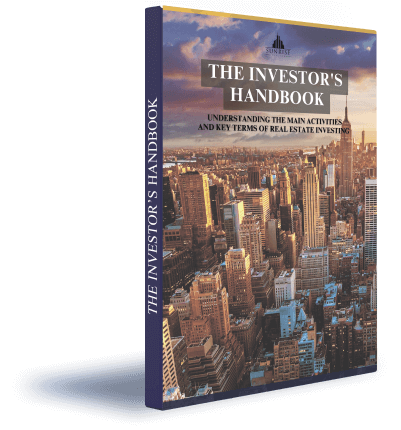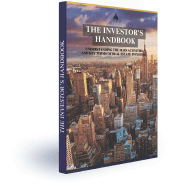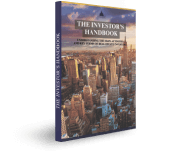The old adage says that the love of money is the root of all evil. Taking on too much personal debt can certainly feel enslaving. This rings true to an extent. When you are drowning in debt, your life becomes consumed with trying to pay it off. Meanwhile, your debts continue growing as interest accumulates daily. No one lends money for free. Despite this, debt remains deeply ingrained in the United States economy.
The Debt Landscape
Total US consumer debt sits at almost $17 trillion, bringing the average household debt to over $56,000. With the US GDP totaling just over $23 trillion, it’s clear that consumer debt makes up a massive portion of the entire US economy.
But I come bearing good news – debt isn’t inherently bad, despite the prevalent opinion. Most personal debt like credit cards and student loans is problematic. However, certain types of debt, when used strategically, can prove beneficial. Let’s examine how the wealthy and businesses utilize debt to amplify profits.
This may seem counterintuitive initially. Why would those with money need to borrow? Consumer debt is supposed to be a tool for those without means. However, that’s not how modern capitalism works. Debt, when employed purposefully, is a powerful tool. In this article, you’ll learn how the rich leverage debt to maximize wealth.
How the Rich Put Debt to Work
Let’s explore 5 key ways the wealthy and successful businesses deploy debt to their advantage.
1. Borrowing for Inventory
A massive chunk of global trade relies on borrowing for inventory financing. Taking out loans to start a business can be reckless. However, for established companies, particularly in traditional industries, borrowing to fund operations is routine and often the smartest approach.
Consider a simple example – selling pens. Pens have consistent demand. Traditionally, an entrepreneur would travel to a manufacturing hub like China to source quality pens priced appropriately, buy a shipment, import them for local distribution and sales. But today, this process is largely handled through middlemen online.
Here’s the critical element – you don’t have to pay upfront for the products to get them.
Over the past 50 years, China has become the world’s factory, with thousands of manufacturers churning out every conceivable consumer good. To facilitate sales, many factories will lend product inventory if the buyer pays later. Of course, some trust must be established first. But this business model has thrived for decades. The client sells the products domestically or overseas, pays the factory, and borrows more stock.
You tell the factory: you make it, I’ll sell it, we both profit. This works because you don’t tie up capital in inventory. For businesses, particularly in low-margin industries, borrowing for inventory is vital to growth and managing cash flow. Selling becomes far more scalable when you can access inventory without huge upfront investment.
Click here to learn more and subscribe to the newsletter
2. Real Estate Refinancing
Refinancing real estate debt can provide access to quick cash and generous tax loopholes. Without a mortgage, you lose out on tax deductions. The wealthy constantly refinance properties to maximize deductions and tap accrued equity. Each dollar saved in taxes is an extra dollar earned.
Here’s a common technique real estate investors employ:
You save $200,000 for a down payment – substantial, but low for big real estate deals. You find a rundown $500,000 property and acquire it with 20% down by securing a mortgage. You invest 10% of the total value ($50,000) into renovations. This raises the market value to $700,000.
You refinance, taking out 80% of the new $700K value, equaling $560,000. $400,000 repays the first lender, $50,000 covers renovation costs, leaving you with $110,000 cash-out profit.
You’ve profited using debt, while retaining an income-producing asset. Ongoing mortgage interest and tax deductions provide lasting savings too. Repeating this cycle allows real estate investors to build wealth and cash flow quickly when starting with limited capital.
3. Short Selling for Hedge Funds
Hedge funds, created by and for the ultra-wealthy, often employ controversial trading strategies, like short selling. Average investors buy stocks or assets with the hope they’ll appreciate over time. Hedge funds aim to profit in the opposite manner – from declining asset prices.
For example, if they anticipate Facebook stock dropping due to privacy concerns and regulatory action, they borrow FB shares from a broker, sell them immediately, and pocket the cash. If the price falls as predicted, they use the cash to buy back shares at the lower price to return to the lender, profiting from the difference.
This is highly risky. If the analysis proves wrong, they must re-purchase at higher prices to repay the loan, losing money in the process. While shorting has essentially unlimited loss potential, it can yield astronomical returns for those with resources to absorb potential downside.
4. Forex Leverage
In the foreign currency exchange market, traders can utilize incredible leverage, often borrowing up to 100 times their capital. If you have $1,000 cash, you can control $100,000 worth of currency. Even minor fluctuations yield sizable profits due to the outsized positions accessible through leverage.
Get your free guide “Passive Real Estate Investing For Busy Professionals”
5. Building Credit to Access Capital
Good credit enables access to low-interest loans, allowing businesses to smoothly expand. While high interest debt like credit cards are dangerous, strategic leverage facilitates growth for those with sound business models.
Building a reputation as a reliable borrower opens the door to billions in capital. Banks can even create money from nothing simply by lending. Having access to credit provides flexibility and agility to pounce on opportunities.
Key Takeaways
While excessive personal consumer debt is problematic, certain types of debt carefully employed allow businesses and the wealthy to amplify their profits.
Key benefits include:
– Access to inventory/assets without tying up capital
– Tax deductions and loopholes
– Speculative leverage
– Outsized returns on capital
Used judiciously, debt enables increased scale and accelerated growth. By understanding leverage, you can apply these principles on a smaller scale to grow your own wealth. While debt misused can be dangerous, when managed strategically, it is a powerful tool.
Interested in multifamily real estate investing? Our experienced team is here to help. From market research to identifying the best opportunities, we guide you through the process. Subscribe to our YouTube channel for informative videos and expert discussions, and follow us on Instagram for exclusive content. Explore our comprehensive Udemy course for detailed insights and strategies. Ready to elevate your investment journey? Contact us now to schedule a consultation and achieve your financial goals in real estate.
*This content is for informational purposes only and is not intended as financial or legal advice. Please consult with a professional advisor before making any investment decisions.



























